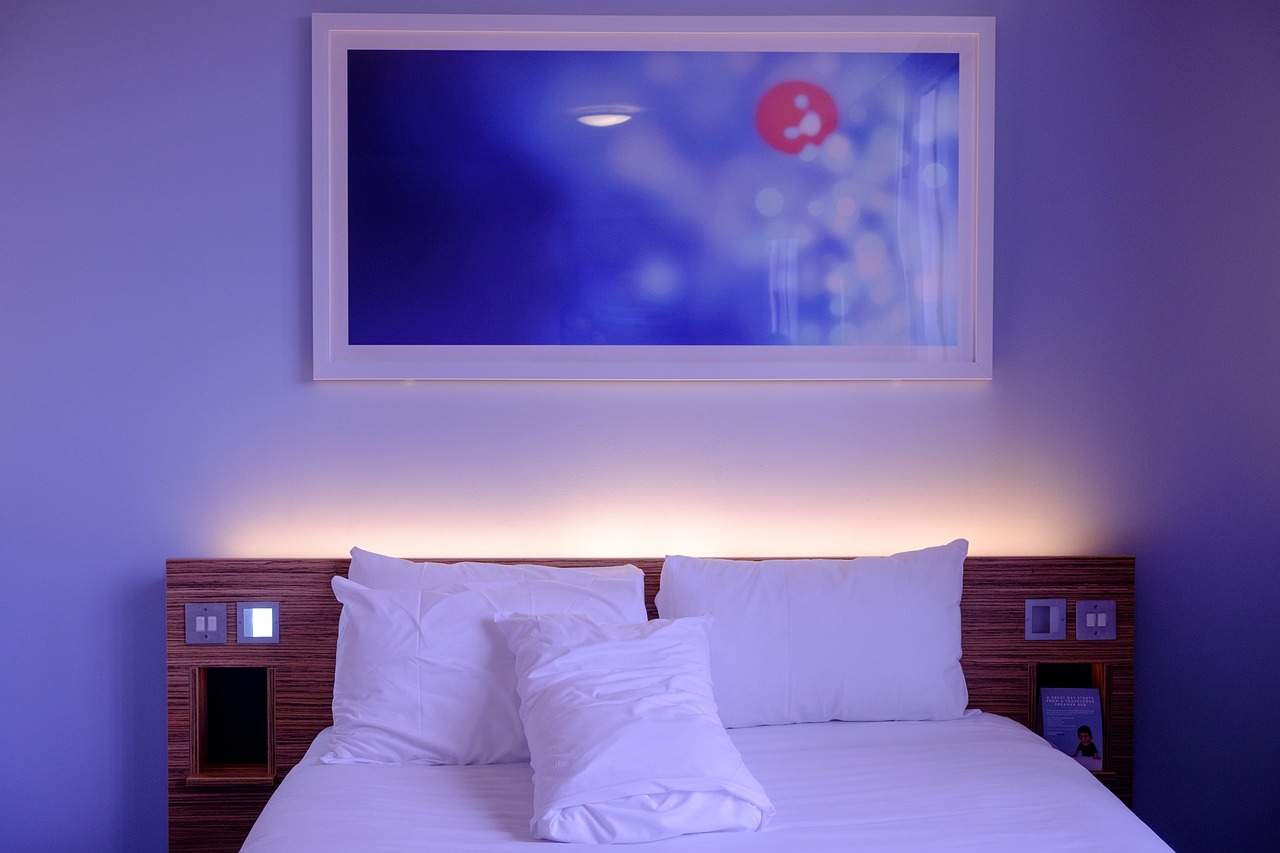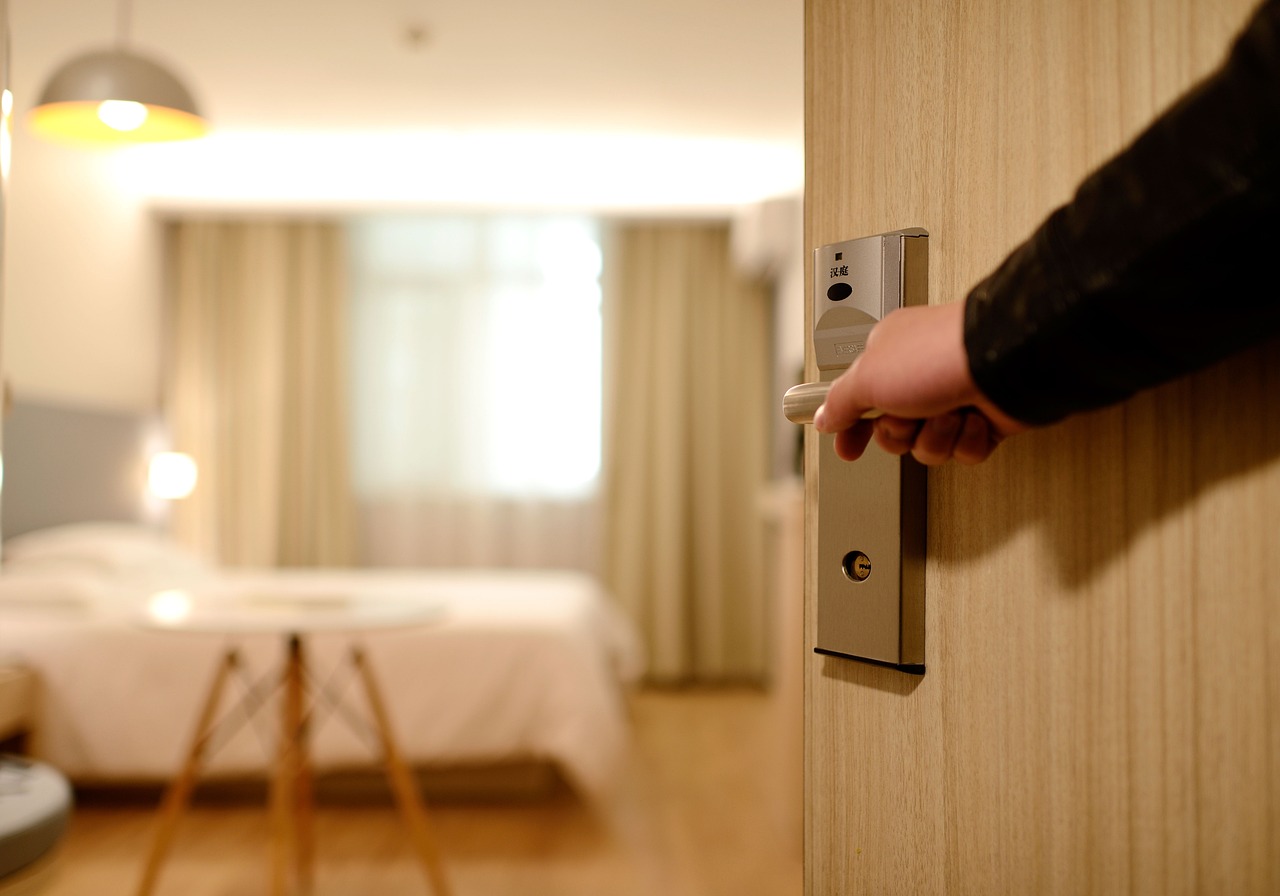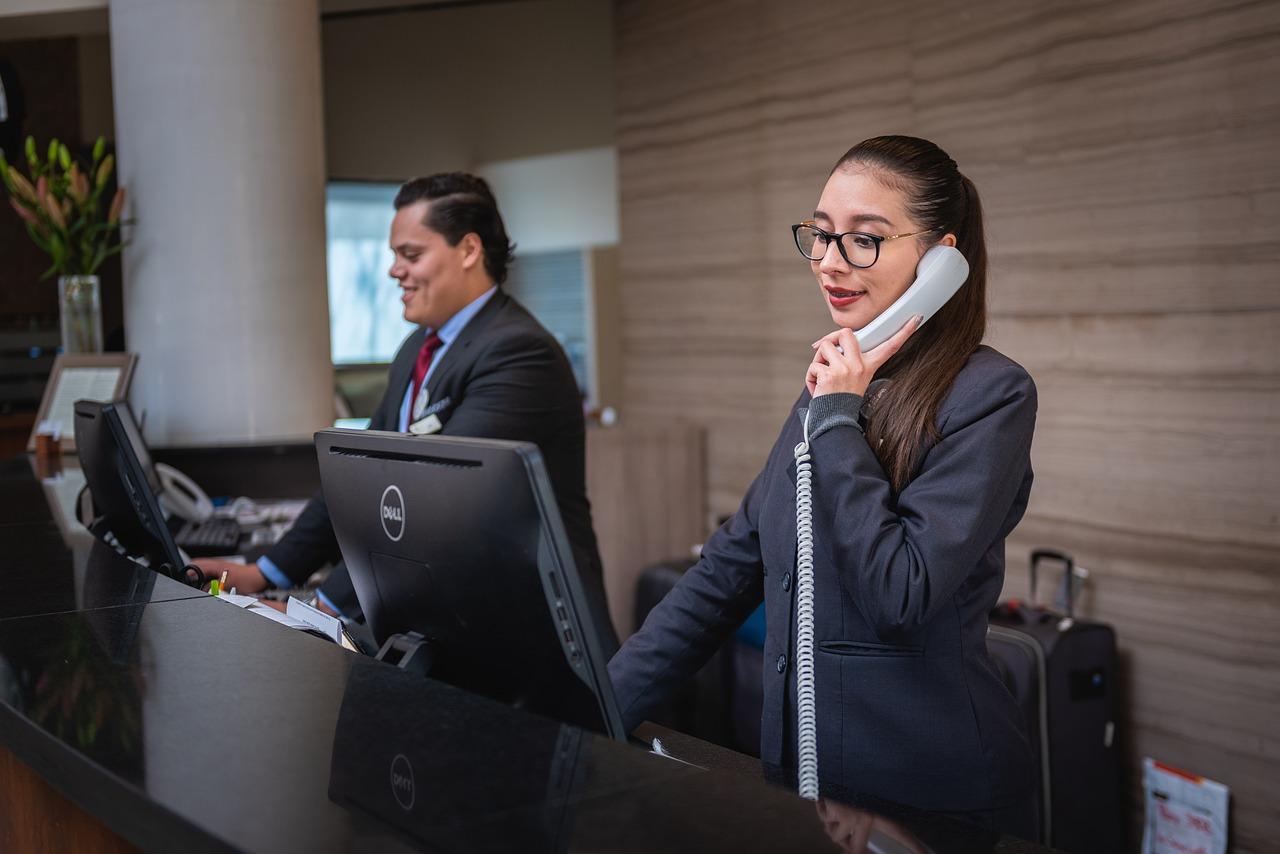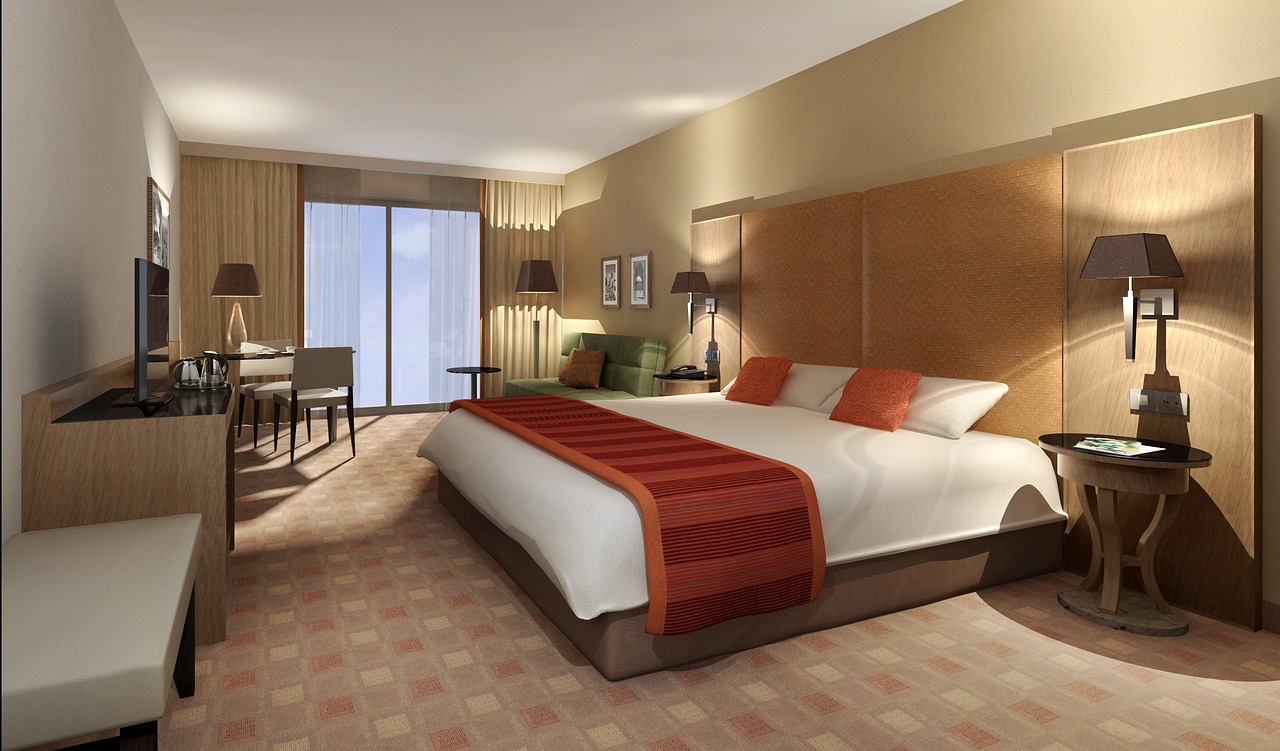Revenue Per Available Room (RevPAR) – The Definitive Guide
Are you looking to evaluate the financial performance of your hospitality business?
Well, Revenue per available room (RevPAR) might be your golden ticket.
RevPAR is an effective way for hoteliers to measure their financial performance and make informed decisions about pricing and occupancy.
In this guide, we will explore what RevPAR is, how you can calculate it, use it, and improve it.
Read on to become the go-to RevPAR guru at your establishment.
Key Takeaways
- RevPAR helps hoteliers understand the revenue generated by each available room in their hotel.
- RevPAR is calculated by multiplying the average daily room rate (ADR) by the occupancy rate.
- RevPAR allows hoteliers to measure their financial performance and make informed decisions about pricing and occupancy.

How To Calculate RevPAR
Calculating RevPAR is relatively straightforward. After reading (or skimming) the following sections, you will be well prepared to know how much revenue each room of your hotel generates.
Definition and Significance
Revenue Per Available Room (RevPAR) is a key performance indicator (KPI) used in the hotel industry to measure the average revenue generated from each available room. It is an essential metric for hotel managers, providing insight into their overall revenue performance. RevPAR considers the hotel’s occupancy rate and average daily rate (ADR) to give a more comprehensive view of the hotel’s revenue. As financially independent retire early (FIRE) travelers get more cost-conscious in 2024 managing KPIs like RevPar are critical to maintain profits.
Calculation of RevPAR
To calculate RevPAR, the hotel’s total room revenue is divided by the total number of available rooms. The formula for RevPAR is as follows:
RevPAR = Total Room Revenue / Total Available Rooms
For example, if a hotel has 100 rooms and generates $10,000 in room revenue, the RevPAR would be:
RevPAR = $10,000 / 100 = $100
RevPAR vs. ADR vs. Occupancy Rate
RevPAR is often compared to ADR and occupancy rate as they are all important metrics for measuring a hotel’s revenue performance. ADR is the average daily rate charged for each room, while occupancy rate is the percentage of available occupied rooms.
While ADR and occupancy rate are important metrics, RevPAR provides a more comprehensive view of the hotel’s revenue performance as both metrics are considered.
For example, a hotel with a high occupancy rate but low ADR may have a lower RevPAR than a hotel with a lower occupancy rate but higher ADR.
RevPAR provides a more comprehensive view of the hotel’s revenue performance compared to ADR and occupancy rate.
How to Use RevPAR
Ok, now you know the basics of what Revenue Per Available Room (RevPAR) is, let’s put it to use.
Here are some ways to use RevPAR to make informed decisions:
Decision Making
By monitoring RevPAR, hotel managers can identify trends and make informed decisions to optimize revenue.
For example, if your RevPAR is low, you can either increase the price of each room or create more rooms.
Now, I know what you’re thinking: Create more rooms?
This option is sometimes not possible and also costs more. As such, increasing your rates is generally the most common way to improve your RevPAR.
To justify the rate increases, ensure you provide the BEST service and hospitality possible. Make your hotel a destination people want to pay the extra money for. If you treat your guests like millionaires, they won’t have a problem spending more money at your establishment.
Benchmarking and Market Comparison
RevPAR can also be used for benchmarking and market comparison. By comparing RevPAR with other hotels in the same market, hotel managers can determine how well their hotel performs compared to competitors. This information can be used to identify areas for improvement and make informed decisions to optimize revenue.
Trends and Seasonality Effects
By analyzing RevPAR over time, hotel managers can identify trends and seasonal effects trends.
For example, if RevPAR is consistently low during a particular season, the hotel manager can take steps to improve revenue during that season. Some options could include holding a conference, running promotions, or increasing advertising to increase room demand and, hence, price.

How To Improve RevPAR
Improving RevPAR requires a comprehensive strategy that includes pricing, inventory management, and marketing and distribution channels.
Interested in how these strategies work?
Read on and find out 🙂
Pricing Strategies
One way to improve RevPAR is through pricing strategies. Hotel managers can implement dynamic pricing, which involves adjusting room rates based on demand and market conditions.
This strategy allows hotels to maximize revenue by charging higher rates during peak periods and lower rates during off-peak periods.
Another pricing strategy is offering package deals with additional amenities or services. This approach can increase the perceived value of the room and attract more bookings.
Inventory Management
Effective inventory management is another way to improve RevPAR. Hotel managers can use data analytics to optimize room availability and pricing. Managers can identify trends and patterns that inform pricing and inventory decisions by analyzing historical booking data.
Another inventory management strategy is implementing a yield management system, which uses algorithms to adjust room rates based on demand and availability. This system can help hotels maximize revenue by ensuring that rooms are priced appropriately to attract bookings.
Marketing and Distribution Channels
Marketing and distribution channels are also important factors in improving RevPAR. Hotel managers should prioritize marketing efforts that target their ideal customer base. This can include social media advertising, email marketing, and search engine optimization.
In addition, hotels should consider partnering with online travel agencies (OTAs) to increase their visibility and reach. OTAs can help hotels reach a wider audience and attract more bookings.
Overall, improving RevPAR requires a comprehensive strategy that includes pricing strategies, inventory management, and marketing and distribution channels.
Issues with RevPAR
Revenue per available room (RevPAR) is pretty awesome, but there are drawbacks like anything.
Awareness of these drawbacks will help you use this metric better when growing your hotel.
External Factors Impacting RevPAR
External factors such as natural disasters, economic downturns, and political instability can significantly impact RevPAR.
For example, during the COVID-19 pandemic, the hotel industry experienced a sharp decline in RevPAR due to travel restrictions and reduced demand for hotel rooms.
Similarly, natural disasters such as hurricanes, floods, and wildfires can disrupt the tourism industry and lead to a decline in RevPAR.
Hoteliers must be aware of these external factors and have contingency plans in place to mitigate their impact on RevPAR.
Limitations in Revenue Management
While RevPAR is a valuable metric for measuring a hotel’s financial performance, it has certain limitations in revenue management.
For example, RevPAR does not consider the cost of acquiring customers or the profitability of different customer segments.
To overcome these limitations, hoteliers need to adopt a more comprehensive revenue management strategy that considers the cost of customer acquisition, customer lifetime value, and the profitability of different customer segments.
This can help hoteliers optimize their profitability and revenue while maintaining high customer satisfaction.

Image Source
Technology in RevPAR Maximization
The use of technology in the hospitality industry has revolutionized the way hotels operate and manage their revenue.
With the advent of various tools and software, hoteliers can now pursue digital transformation to optimize their RevPAR and increase their profitability.
Next, we will explore some of the most influential technology solutions that hotels can use to maximize their RevPAR.
Hotel Booking Engines
Leveraging a hotel booking engine significantly enhances revenue per available room (RevPAR). Direct bookings through a hotel’s own website reduce commission fees paid to third-party sites, directly boosting RevPAR.
The dynamic pricing capabilities of these engines allow for real-time rate adjustments and maximize revenue during peak demand.
A seamless booking experience improves guest satisfaction, increasing direct bookings and repeat business.
Insightful data gathered from booking engines enables hotels to make informed pricing and promotional decisions, further enhancing RevPAR.
Revenue Management Systems (RMS)
Revenue Management Systems (RMS) are software tools that enable hotels to optimize their pricing and inventory in real-time. These systems use algorithms and data analytics to analyze market trends, demand patterns, and competitor pricing to recommend the best pricing strategy for each room type. RMS can help hotels maximize their RevPAR by ensuring that they are charging the right price at the right time.
Data Analytics and Forecasting
Data analytics and forecasting tools are essential for hotels that want to maximize their RevPAR. These tools use historical data, market trends, and other variables to predict future demand and occupancy levels. By understanding future demand, hotels can adjust their pricing and inventory to maximize their RevPAR. Data analytics and forecasting tools can also help hotels identify trends and patterns that can inform their revenue management strategy.
Online Distribution Tools
Online distribution tools are essential for hotels that want to maximize their RevPAR.
These tools enable hotels to distribute their inventory across multiple online channels, including OTAs, GDS, and their own website.
With a broad distribution strategy, hotels can reach more potential guests and increase occupancy. Online distribution tools can also help hotels optimize their pricing and inventory across different channels, ensuring they maximize their RevPAR across all channels.
Technology plays a critical role in RevPAR maximization. With the right tools and software, hotels can optimize their pricing and inventory, predict future demand, and reach more potential guests.
By embracing technology, hotels can increase profitability and stay competitive in an ever-changing market.

Examples of RevPAR
So, the theory is great, but let’s get our hands dirty with some examples.
Here are some examples of successful RevPAR growth and RevPAR turnaround stories.
Successful RevPAR Growth Examples
The Ritz-Carlton, Naples
The Ritz-Carlton, Naples, is a luxury hotel located in Florida, USA. In 2018, the hotel reported a RevPAR of $365. This figure represents a 6.8% increase from the previous year, which is a significant achievement given the competitive nature of the luxury hotel market.
The hotel achieved this growth by implementing several strategies, including:
- Offering personalized services to guests, such as customized welcome amenities and personalized dining experiences.
- Hosting more events and conferences to increase occupancy rates during off-peak periods.
- Investing in technology to improve operational efficiency and enhance the guest experience.
RevPAR Turnaround Stories
The St. Regis New York
The St. Regis New York is a luxury hotel located in New York City, USA. In 2016, the hotel reported a RevPAR of $722. This figure represents a 1.1% decrease from the previous year, which is concerning given the hotel’s reputation as one of the most iconic luxury hotels in the world.
To turn things around, the hotel implemented a number of strategies, including:
- Renovating guest rooms and public spaces to modernize the hotel while maintaining its historic charm.
- Offering unique experiences to guests, such as a private tour of the Metropolitan Museum of Art.
- Investing in digital marketing to reach a younger, tech-savvy audience.
As a result, the hotel reported a RevPAR of $812 in 2018, representing a 12.5% increase from the previous year.
Future of RevPAR
As the hospitality industry continues to evolve, so does the concept of RevPAR. In the future, emerging trends in hotel revenue management and innovations in predictive analytics will play a significant role in shaping the future of RevPAR.
Emerging Trends in Hotel Revenue Management
One of the emerging trends in hotel revenue management is personalized pricing.
Personalized pricing involves using data analytics to tailor pricing to individual guests based on their preferences, past booking history, and other factors. This approach can help hotels optimize their pricing strategies and increase RevPAR.
Another trend is the use of dynamic pricing.
Dynamic pricing involves adjusting room rates based on supply and demand in real-time. This approach can help hotels maximize revenue during peak periods while attracting guests during slower periods.
Innovations and Predictive Analytics
Innovations in predictive analytics are also set to shape the future of RevPAR. Predictive analytics involves using data to forecast future trends and behaviors. By analyzing historical data, hotels can identify patterns and make more informed decisions about pricing and other revenue management strategies.
One example of predictive analytics in action is using machine learning algorithms to optimize real-time pricing. These algorithms can analyze vast amounts of data and adjust pricing based on factors such as occupancy rates, competitor pricing, and seasonal demand.
Overall, the future of RevPAR is bright, with emerging trends in hotel revenue management and innovations in predictive analytics set to drive growth and revenue for hotels worldwide.
RevPAR Alternatives
While RevPAR is a widely accepted metric for measuring hotel performance, there are several other metrics that can be used as alternatives or in conjunction with RevPAR.
Here are three popular alternatives:
ARPAR
Adjusted Revenue Per Available Room (ARPAR) is similar to RevPAR but considers additional revenue streams beyond room revenue.
ARPAR is calculated by subtracting variable costs per occupied room from ADR and adding additional revenue per occupied room, then multiplying the result by the occupancy rate.
ARPAR = (ADR – variable costs per occupied room + additional revenues per occupied room) x occupancy
ARPAR is a great metric for measuring revenue management performance and the overall effectiveness of a hotel’s pricing policy.
TrevPAR
Total Revenue Per Available Room (TrevPAR) measures the total revenue generated by all revenue streams, including rooms, food and beverage, and other hotel services.
It is calculated by dividing total hotel revenue by the total number of available rooms.
TrevPAR = Total revenue / Total rooms available
TrevPAR is a useful metric for hotels that generate significant revenue from non-room sources, such as restaurants or event spaces.
GOPAR
Gross Operating Profit Per Available Room (GOPAR) measures the profitability of each available room.
It is calculated by subtracting total hotel expenses from total hotel revenue and dividing the result by the total number of available rooms.
GOPAR = Gross operating profit / Total available rooms
GOPAR is a useful metric for hotels that want to maximize profitability rather than just revenue.
While RevPAR is the most commonly used metric for measuring hotel performance, other metrics should also be considered to get a more complete picture of a hotel’s financial performance.
Final Thoughts
By calculating RevPAR, hoteliers can determine the average revenue generated by each available room in their hotel.
This metric helps identify trends and patterns in hotel performance and can provide insights into how to optimize revenue.
It is important to note that RevPAR is just one of many metrics used in the hospitality industry and should not be used in isolation.
Overall, hoteliers should maximize their RevPAR by increasing their occupancy and average daily rates.
By using a booking system like CultBooking, hotels can improve their booking rates and get closer to hitting RevPAR.
Try out CultBooking for free and watch your occupancy rates soar.
Frequently Asked Questions
What is the net revenue per available room?
Net Revenue Per Available Room (RevPAR) is a performance metric used in the hotel industry that measures the total revenue generated per available room minus any direct costs associated with selling that room. This metric provides a more accurate picture of a hotel’s profitability than RevPAR alone, as it considers the costs associated with selling each room. To calculate RevPAR, subtract direct costs, such as commissions paid to travel agents and online travel agencies, from the total revenue generated per available room.
What is the difference between RevPAR and room revenue?
RevPAR and room revenue are essential performance metrics used in the hotel industry but are measured differently. Room revenue measures the total revenue generated by selling rooms, while RevPAR measures the revenue generated per available room. In other words, RevPAR considers the number of rooms available to sell, while room revenue does not. This makes RevPAR a more accurate measure of a hotel’s revenue performance, as it accounts for changes in occupancy rates.
What is a good RevPAR number?
There is no one-size-fits-all answer to this question, as a “good” RevPAR number will depend on various factors, including the hotel’s location, the type of hotel, and the time of year. Generally speaking, a higher RevPAR is better, as it indicates that a hotel is generating more revenue per available room. However, a high RevPAR may also suggest that a hotel is charging too much for its rooms, which could lead to decreased occupancy rates in the long term. Ultimately, the goal should be to balance RevPAR and occupancy rates to maximize profitability while maintaining a healthy occupancy rate.
About the author
Julian Lankstead is the founder of ClickPioneer & JulianLankstead.com. He helps businesses acquire customers using cutting-edge digital marketing techniques and optimizing business processes.



 info@cultbooking.com
info@cultbooking.com  0049 30 726225 0
0049 30 726225 0